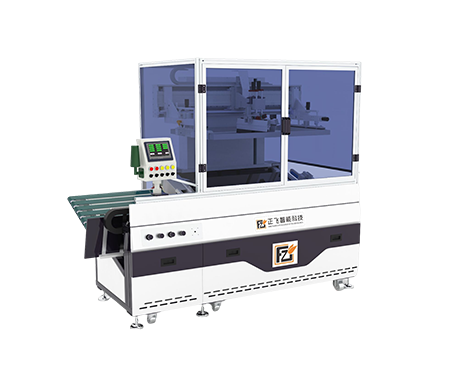Adjusting ink for screen printing machine is a delicate process involving multiple steps and precautions. The following are detailed adjustment methods:
1、 Preliminary preparation
Calculate ink consumption: Before adjusting the color, the ink consumption of each color print should be calculated first to ensure that the appropriate amount of ink is mixed. Especially for two liquid reactive inks, the ink adjustment amount needs to be calculated based on their curing speed and printing speed.
Environment selection: Ink adjustment should be carried out under stable natural light, avoiding parallel observation of multiple colors to reduce the impact of illusions. At the same time, the ink adjustment location should be chosen in a place with stable lighting or avoiding direct sunlight.
Understand ink performance: Familiarize yourself with the specifications, properties, and characteristics of the ink used, in order to better control the fluidity and drying speed of the ink during the ink blending process.

2、 Color mixing steps
Distinguishing colors: Correctly distinguish whether the original (or original) color is primary, intermediate, or complex. For intermediate and complex colors, it is necessary to distinguish the ratio between the main color and the auxiliary color.
Step by step addition: When configuring fresh ink, the addition of dark ink should gradually approach the target color, avoiding adding too much at once, and then using a large amount of light ink to remedy. This can ensure the accuracy and stability of the color.
Sample debugging: Conduct sample debugging according to the color tone indicated in the original manuscript. Only when the color difference is small or equal, can a large batch of adjustments be made. At the same time, attention should be paid to time control during the debugging process to avoid changes in ink performance caused by excessive time.
3、 Adjust ink compatibility
Viscosity adjustment: Adjust the viscosity of the ink using appropriate solvents, diluents, surfactants, and reducing agents based on the characteristics of the printed image, screen printing mesh size, printing speed, workshop temperature, and the surface tension and ink absorption performance of the substrate.
Liquidity and drying speed: Adjust the fluidity of the ink to ensure smooth transfer to the surface of the printed material. At the same time, adjust the ink drying speed according to the printing speed and environmental conditions to avoid printing problems caused by being too fast or too slow.
4、 Equipment adjustment
Mesh height: Adjust the height of the mesh to almost level with the workbench to ensure that the ink can be clearly transferred to the surface of the printed material.
Scraper angle and pressure: Adjust the angle and pressure of the scraper to control the amount of ink transfer. An angle that is too small may result in ink not being able to fully wipe the surface of the printed material; If the angle is too large, it may cause the scraper to scrape off the ink too early and produce a blank.
Printing speed: Adjust the printing speed according to the characteristics of the ink and printing requirements. Too slow may lead to excessive squeezing of ink; If it is too fast, the ink may not be able to be fully transferred to the printed material.
By adjusting the above steps and precautions, it is possible to ensure that the ink mixing and printing process of the screen printing machine reach the optimal state, thereby obtaining high-quality printed products.